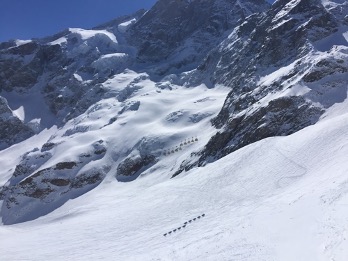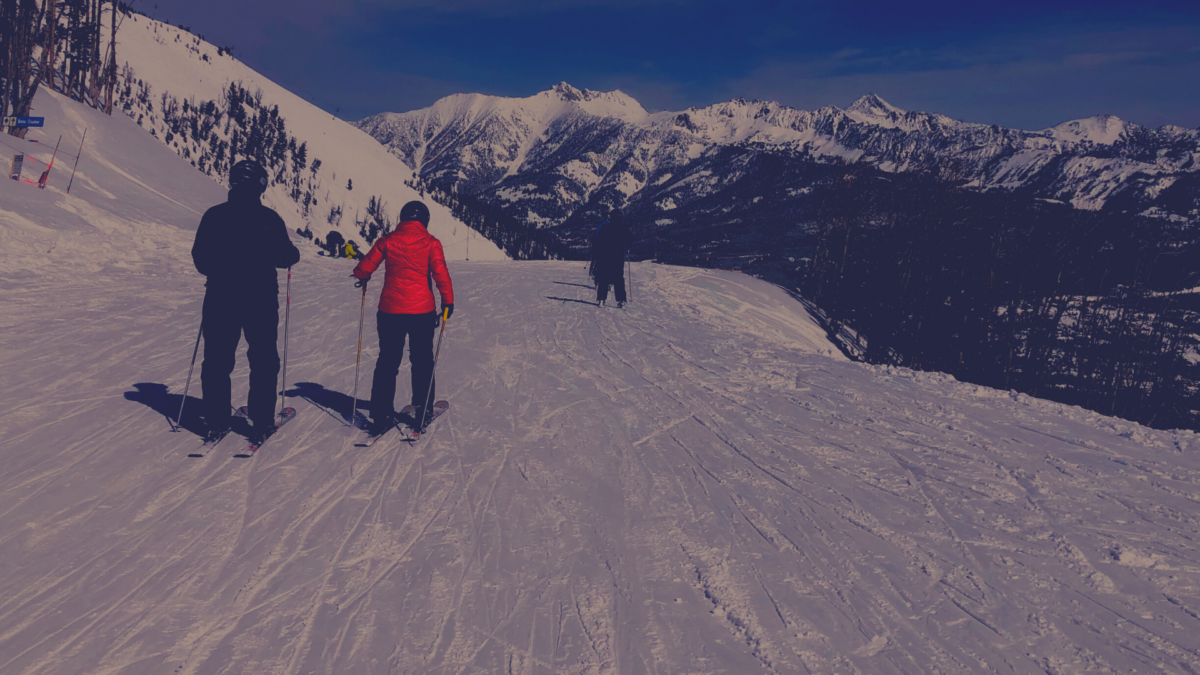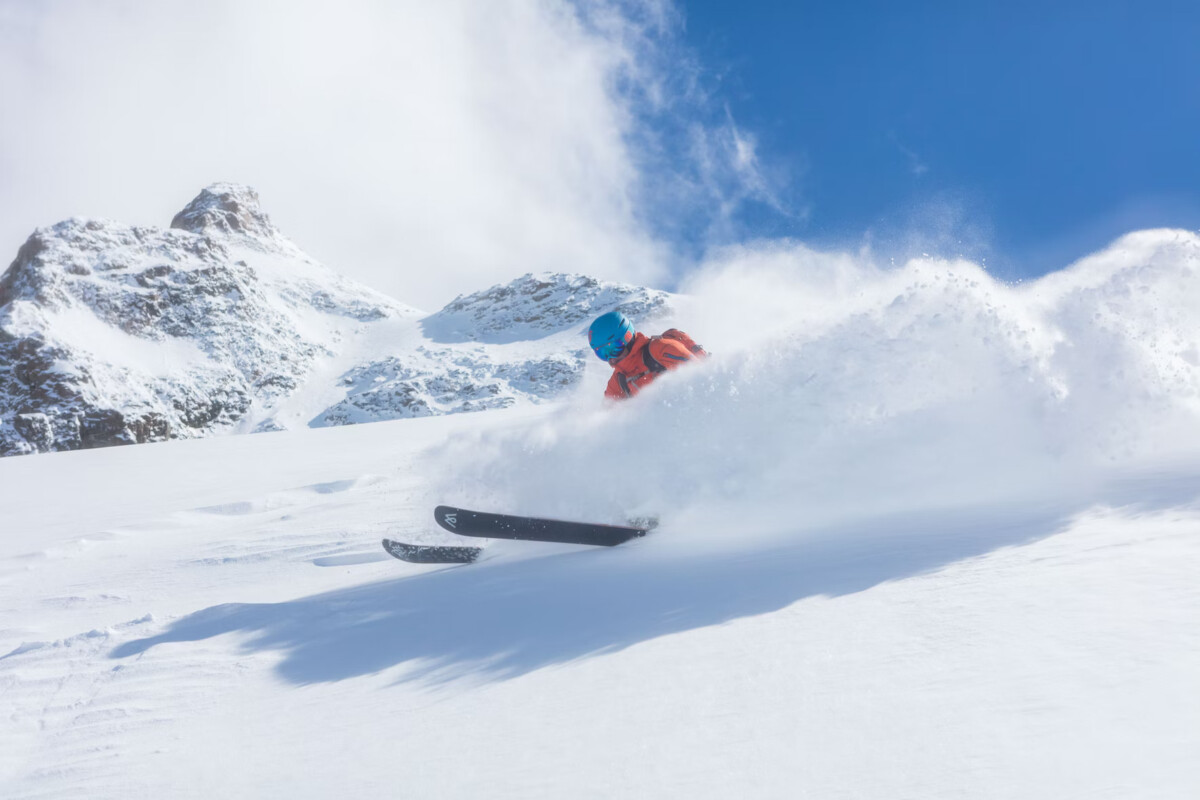In the French Alps, a small and inconspicuous ski resort has become the ultimate challenge for extreme skiers. Appropriately named, La Grave has been the gravesite of many skiers who have dared to overcome La Meije, the tallest mountain at La Grave. There are no black or even double black diamonds at La Grave. The entire area is unpisted, with no ski patrols and no formal avalanche control teams to ensure the safety of skiers. Visiting skiers will have to hire an International Federation of Mountain Guides Association (IFMGA) accredited local guide if they want any chance at safely navigating through the glaciated terrain and steep cliffs. The numerous fatalities at La Grave have given the previously unknown and unimportant ski area a reputation of infamy. This in turn, however, has only attracted more skiers to their own demise as we only begin understanding the risks associated with extreme skiing.
La Grave itself is a tiny ski destination when compared to many of the other famous resorts throughout the Alps. As of 2016, its hotels and guesthouses can accommodate up to only 700 tourists. When compared to Val-d’Isère, a ski resort only 40 miles away which has up to 30,000 beds, it is evident that La Grave is not meant for large scale tourism. This is the way Pelle Lang, La Grave’s founding father, wants to keep it. Born in Sweden, Lang first came to La Grave in 1984 and instantly became entranced by the mountain, even though it didn’t have the infrastructure or popularity to become a big resort mountain. In 1989, he and his wife Ayse purchased the Hôtel des Alpes and Lang began marketing guides and accommodation packages. La Grave didn’t become an overnight success but did achieve steady growth for a number of years after Lang and his wife invested in the area.
For those brave enough, La Grave’s renowned téléphérique, a two-stage gondola system, will take them to the top of La Meiji in rainbow-colored gondolas. The first lift carries riders up over 1,700 meters to an elevation of 3,200 meters. After this, a unique suspended drag lift carries skiers across the Girose Glacier. The total trip takes skiers up more than 30,000 meters, or the equivalent of eight Empire State Buildings. The view from up top provides a stunning view of the French Alps. Skiers can see all the way to Mont Blanc, about 60 miles north.

While La Grave had cultivated a cult following among a niche group of skiers, it wasn’t until the death of one of extreme skiing’s most famous athletes there that the mountain earned legendary status. The area’s growing reputation eventually attracted the attention of Doug Coombs, a pioneer of extreme skiing, two-time winner of the Extreme Skiing Championship, and eventual member of the US Ski and Snowboard Hall of Fame. On April 3, 2006, Coombs fell 490 feet to his death while skiing with his friends at La Grave. Coombs was trying to rescue his ski partner, Chad VanderHam, who had earlier fallen himself. In the process, Coombs slipped off a cliff and was later found dead. His partner would later succumb to injuries as well. Doug Coombs was survived by his wife, Emily, and their two-year-old son David.
Coombs and VanderHam’s deaths provoked debates over the responsibility that ski-area managers and governments have in protecting skiers. To many, Coombs’ and VanderHam’s deaths were signs that ski-areas such as La Grave should meet safety requirements to avoid further casualties. The extreme skiing community, however, was very vocal about its desire to keep certain ski areas wild. Skiers have even been reluctant about posting signs regarding avalanche risks and other dangers. As Nathanial Vinton of the New York Times found, “guides speak of adapting the skier to the mountain, not the other way around.” Doug Coombs would have likely agreed with this sentiment. In 1997, Coomb’s skiing privileges were revoked at Jackson Hole when the ski patrol accused him of crossing a boundary in search of a more challenging trail. Coombs, more than anyone, understood the rush and freedom that could only be enjoyed on a wild mountain.
While they are the most famous among the casualties, Doug Coombs and Chad VanderHam are far from the only extreme skiers that have died at La Grave. Over a decade after their deaths, a woman perished in an avalanche and in 2021, 5 skiers died in two separate avalanches near La Grave. The number of near-fatal incidents is also high. In an article on SnowBrains.com, Miles Clark, a professional free skier and mountain guide, recounts an incident where his friend found himself on the edge of a thousand-foot cliff on La Meije without realizing it. A helicopter that luckily happened to be flying by and spotted the skier was able to guide him to safety. Clark remarked that after skiing at La Grave, “you’re either scarred forever or dying to get back there.”
Clark’s statement about skiers either loving or hating La Grave is commonly held about extreme skiing in general. Pelle Lang claimed that first timers at La Grave don’t sleep well when they visit because their trip feels less like a vacation and more like a roller coaster of anxiety. However, he asserts that when skiers return for a second time, they enjoy it far more because “the terrain is not attacking them— they become part of the environment.” In the extreme skiing community, skiers chase danger for the thrill. Much like how Doug Coombs lived his life, these types of adrenaline junkies are lured in by risk and living on the edge. However, just as La Grave gained infamy when it proved too dangerous for Coombs, a veteran of extreme skiing, further deaths and reports of danger at La Grave would lure for other extreme skiers.
While so many skiers have died at La Grave, the dangers are still not grasped by those visiting the mountain. Although the risks while skiing, especially psychological ones, are not as researched as they should be, it appears that every new study reveals skiers are in far more danger than they previously thought. In his thesis “Perceived Safety among off-Piste & Backcountry Skiers”, Håkon Berget argues that skiers follow what he describes as the “expert halo effect.” Because off-piste skiers typically travel in groups, the presence of a leader due to their experience, age, or even assertiveness can make us feel safer. With regards to skiing, this can influence skiers “to ascribe avalanche skills to a person, that the person may not have.” Ian McCammon found in a 2018 statistical analysis of avalanche fatalities that many ski incidents have been a result of a group delegating decision-making in general to a leader and abandoning their own personal reasoning and risk assessment. Therefore, skiers in groups are likely to feel safer and take riskier actions.
Social dynamics aren’t the only ways skiers can misinterpret risk. In his 2011 article “Comparison of Avalanche Survival Patterns in Canada and Switzerland”, Pascal Haegeli, an expert in avalanche safety, found that in 20% of avalanche incidents where an airbag was worn, the airbag didn’t inflate. However, Berget points out that airbags are advertised as guardian angels. One statistic that is frequently cited to promote airbags is that there is a 97% survival rate for those in an avalanche who can activate their airbag. This can sound reassuring to extreme skiers who hesitate to face the dangers of avalanches. However, that information can be misleading because it does not communicate the real chance that an airbag might not deploy. These psychological factors that manipulate extreme skiers’ perceptions of risk have certainly contributed to the numerous deaths in the sport.
Despite the numerous dangers, La Grave continues to grow more popular. Because La Grave is not avalanche-controlled and skiers have already fallen victim to avalanches on La Meije such as in 2018, it can be expected that skiers will continue to be lured to La Grave through an inaccurate assessment of risk. For instance, every year, extreme skiers from across the world come to La Grave to participate in Le Derby de la Meije. It is an off-piste race where skiers and snowboarders race to traverse 1,500 vertical meters first. In 2018, nearly 900 enthusiasts from 27 different countries competed, as reported by Euronews. The first-place winner finished in less than 7 minutes, while the last racer finished in nearly 3 hours. Although there has never been a death at Le Derby de la Meije, it’s clear that it attracts athletes who want to compete under the most extreme circumstances, even at their own peril. As Tommy Langseth, a professor of sports and education at the College of Southeast Norway, and his co-author found in their paper “Freeride Skiing—Risk-Taking, Recognition, and Moral Boundaries”, risk taking is a social action. Skiers take chances for social credibility and recognition, especially within the extreme community. We can expect La Grave to continue to draw in members of this community even as the dangers of skiing there become more understood.
In 2016, La Grave’s status as the pinnacle of extreme skiing came under additional threats. Although the lift was built in 1976 by Téléphérique de la Meiji (TGM), a small family business, their lease to operate the lift was due to expire. The international fame La Grave had earned attracted the attention of many big-name ski resorts and developers who hoped to commercialize on its reputation and turn it into a more traditional ski resort. Fears of a takeover drew concern from all across the extreme ski community. Many wanted to keep La Grave as the metaphorical and literal wild mountain of extreme skiing.
This prompted Joost van Zundert, skier and resident of La Grave, to launch a crowdfunded campaign with the tagline “Let’s keep it wild.” With promises to prioritize the local’s interests, the campaign raised over €60,000, in addition to the €1,000,000 raised by van Zundert from private investors. Van Zundert told The Guardian that “most of those who contributed had their own stories to tell about La Grave, how much the resort means to them or how their dream is to come here.” Ultimately, van Zundert’s bid was unfortunately rejected. The contract was given to the SATA Group, the second largest ski area operator in France. However, his campaign’s popularity convinced the La Grave town hall to stipulate that SATA would have to keep La Grave unpisted, an enormous victory for extreme skiers. For now, the extreme ski community can keep their ultimate challenge wild and dangerous, just how they like it.
Bibliography
Berget, Håkon. “Perceived Safety Among Off-Piste & Backcountry Skiers.” University of Tromsø, 2012.
Clark, Miles. “La Grave, France Is the Most Extreme Ski Resort in the World: It May Be Gone in 3 Years…” SnowBrains, March 14, 2014. https://snowbrains.com/la-grave-france-extreme-ski-resort-world-may-gone-3-years/.
Coste, Vincent, and Rafael Cereceda. “Le Derby De La Meije – the Ultimate Off-Piste Race.” EuroNews, April 11, 2018.
Davidof, P. “Mountain Rescue Warn Skiers after Avalanche Death in La Grave.” Pisthors, March 2, 2018. https://pistehors.com/25333747/mountain-rescue-warn-skiers-after-avalanche-death-in-la-grave.
Haddad, Sam. “How La Grave Is Aiming to Head off the Big Resort Firms.” The Guardian, December 11, 2016. https://www.theguardian.com/travel/2016/dec/11/france-ski-resort-la-grave-crowdfunding-off-piste.
Haegeli, P., Falk, M., Brugger, H., Etter, H. J., & Boyd, J. “Comparison of Avalanche Survival Patterns in Canada and Switzerland.” Canadian Medical Association Journal, vol. 183 (2011): 789‐795.
Hansen, Matt. “A Skier at the Heart of La Grave.” Powder Magazine, May 10, 2017. https://www.powder.com/stories/a-skier-at-the-heart-of-la-grave.
Huyton, Ian. “La Grave Cable Car – a Short History.” Rad Season, August 13, 2018. https://radseason.com/la-grave-cable-car-a-short-history/.
Le Breton, Gabriella. “Taken to Extremes.” Financial Times, October 14, 2016. https://www.ft.com/content/9d568bb6-9010-11e6-8df8-d3778b55a923.
Levy, Michael. “Extreme Ski Area La Grave given a New Lease on Life.” The Outdoor Journal, October 20, 2017. https://www.outdoorjournal.com/news-2/la-grave-given-new-lease-life/.
McCammon, I. “Heuristic Traps in Recreational Avalanche Accidents: Evidence and Implications.” Avalanche News, no. 68 (2004): 1-11.
Tøstesen, Gustav, and Tommy Langseth. “Freeride Skiing-Risk-Taking, Recognition, and Moral Boundaries.” Frontiers in Sports and Active Living vol. 3 650564. 11 Mar. 2021, doi:10.3389/fspor.2021.650564
Vinton, Nathaniel. “Skiing beyond Safety’s Edge Once Too Often.” The New York Times, May 17, 2006. https://www.nytimes.com/2006/05/17/sports/othersports/skiing-beyond-safetys-edge-once-too-often.html.

